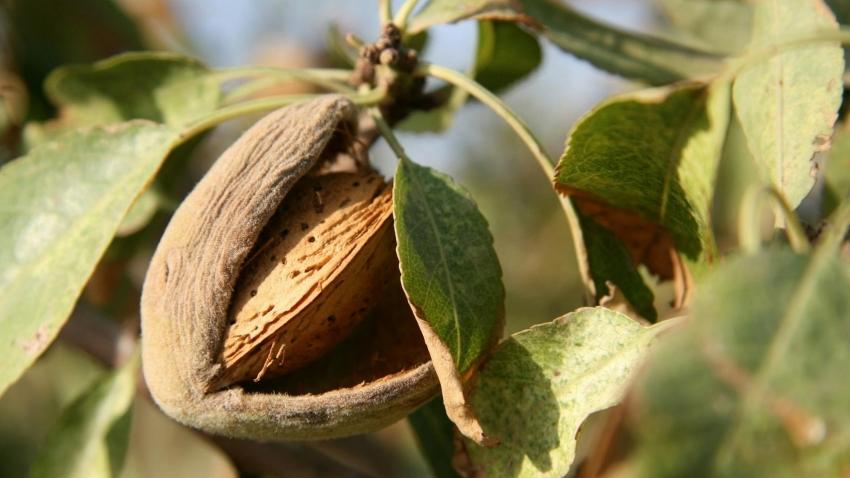You are here
Back to topNew Almond Report Shows Great Potential for China’s Snack Nut Market

The “California Almond Innovation Trends White Paper,” a new report jointly released by the Tmall Innovation Center, the Almond Board of California, and the China Chamber of Commerce for Import and Export of Foodstuffs, Native Produce and Animal By-Products, anticipates a strong 8% annual growth rate in China’s nuts and roasted seeds snack market, reaching 222.2 billion Chinese yuan ($31.2 billion) by 2026. Innovations in flavor, cross-category products and the expansion of applications for plant-based products continue to drive increased almond consumption across the country.
With the growing emphasis on healthy lifestyle choices among Chinese consumers, healthier snacks such as dried fruits, herbal drinks and ready-to-eat traditional medicine products are rapidly increasing in popularity. By 2024, these snacks will account for half of China’s overall snack market, with a growth rate twice that of the broader snack market. Young consumers are increasingly prioritizing nutritious and healthy diets and displaying greater willingness to trying new foods. Across all age groups in China, 70% of consumers view foods containing natural ingredients and less artificial additives as healthier, with 60% of consumers prioritizing nuts and seeds above fruits and vegetables, dairy products and high-quality meats. Young consumers in particular show a significant preference for nuts over other healthy snack options.
Between 2020 and 2023, China’s nut and roasted snacks market grew from 141.5 billion yuan ($19.9 billion) to 176.4 billion yuan ($24.8 billion). The market is expected to maintain a compound annual growth rate of 8% over the next three years, reaching 222.2 billion ($31.2 billion) by 2026. Although China’s roasted snacks market is still dominated by seed nuts like peanuts and roasted sunflower seeds, tree nuts such as almonds, cashews and pistachios are increasing in popularity, with their consumption share rising from 8% in 2013 to 15% in 2020.
Despite an increase in recent years, weekly nut consumption among Chinese consumers is just 9.8% of the amount recommended in the 2022 edition of the Chinese Dietary Guidelines published by the Chinese Nutrition Society, indicating significant growth potential for tree nut consumption in China. In terms of per-capita almond consumption, Chinese individuals consume only one-sixteenth the amount consumed by U.S. individuals.
The primary consumers of almonds in China are high-income women living in top-tier cities, including a new generation of white-collar workers and “sophisticated mothers.” Predominately concentrated in China’s eastern cities, these women lead fast-paced, fashionable lifestyles and have a strong passion for sports and outdoor activities. The 14 core cities for almond consumption in China, in order, are Shanghai, Beijing, Guangzhou, Shenzhen, Hangzhou, Suzhou, Chongqing, Wuhan, Nanjing, Tianjin, Ningbo, Fuzhou, Wuxi and Xiamen. Almond kernels and mixed nut snacks are generally preferred over in-shell almonds, while almond nut gift boxes are becoming increasingly popular as gifts for parents, relatives, friends and clients.
When it comes to almond-related product development, mixed nut snacks, in-shell almonds, and gift boxes of nuts and dried fruit are already well established. Cross-category innovation using almonds as ingredients, including such foods as Chinese and Western pastries, biscuits, candies and chocolates, is also increasingly popular. While the market for almond-based drinks remains relatively small in China, it is the fastest-growing market and displays significant potential.
The report reveals an influx of innovative new flavors in the Chinese snack market, with almonds being paired with fine wines, traditional teas, goji berries and other medicinal ingredients, as well as natural ingredients like matsutake mushrooms, to create surprising new forms and flavors that appeal to younger consumers. Additionally, with vegetarian diets becoming more widespread, plant-based recipes are gaining favor among consumers, and almonds are finding their way into recipes in such forms as pastes, powders, oils, blanched slices and low-fat almond meal.
Almonds are the most commonly imported tree nut in China. According to data from the International Nut and Dried Fruit Council, China imported 84,900 metric tons of almonds in 2022, with the United States and Australia as the main suppliers. In 2017, the United States was almost the sole supplier, but its market share has declined year by year, falling below 63% in 2023. Owing to preferential tariffs, almond exports from Australia to China have increased in recent years, with India taking over as the largest importer of Californian almonds.
Image: Pixabay
This article was translated from Chinese. Read the original article.















Add new comment